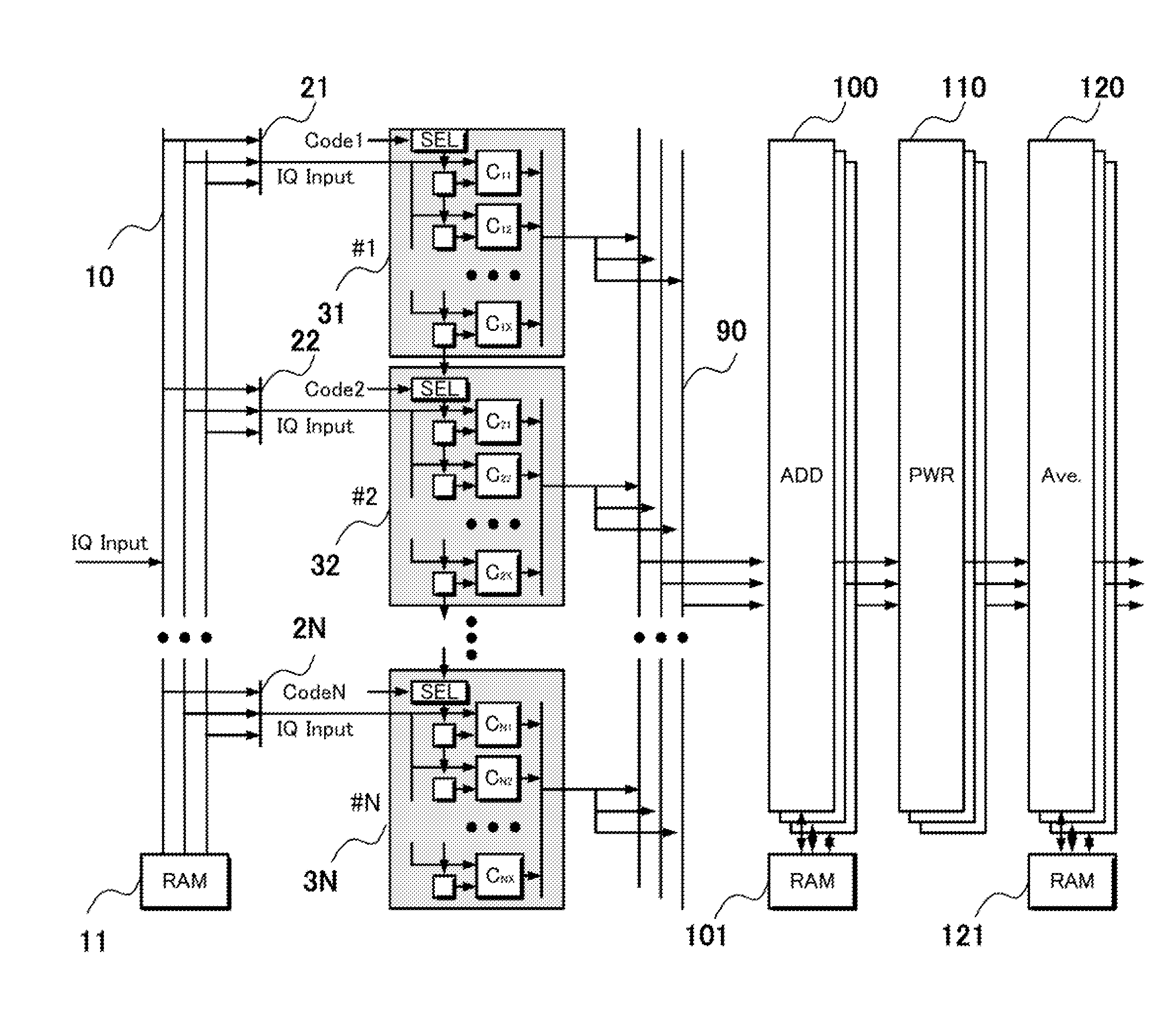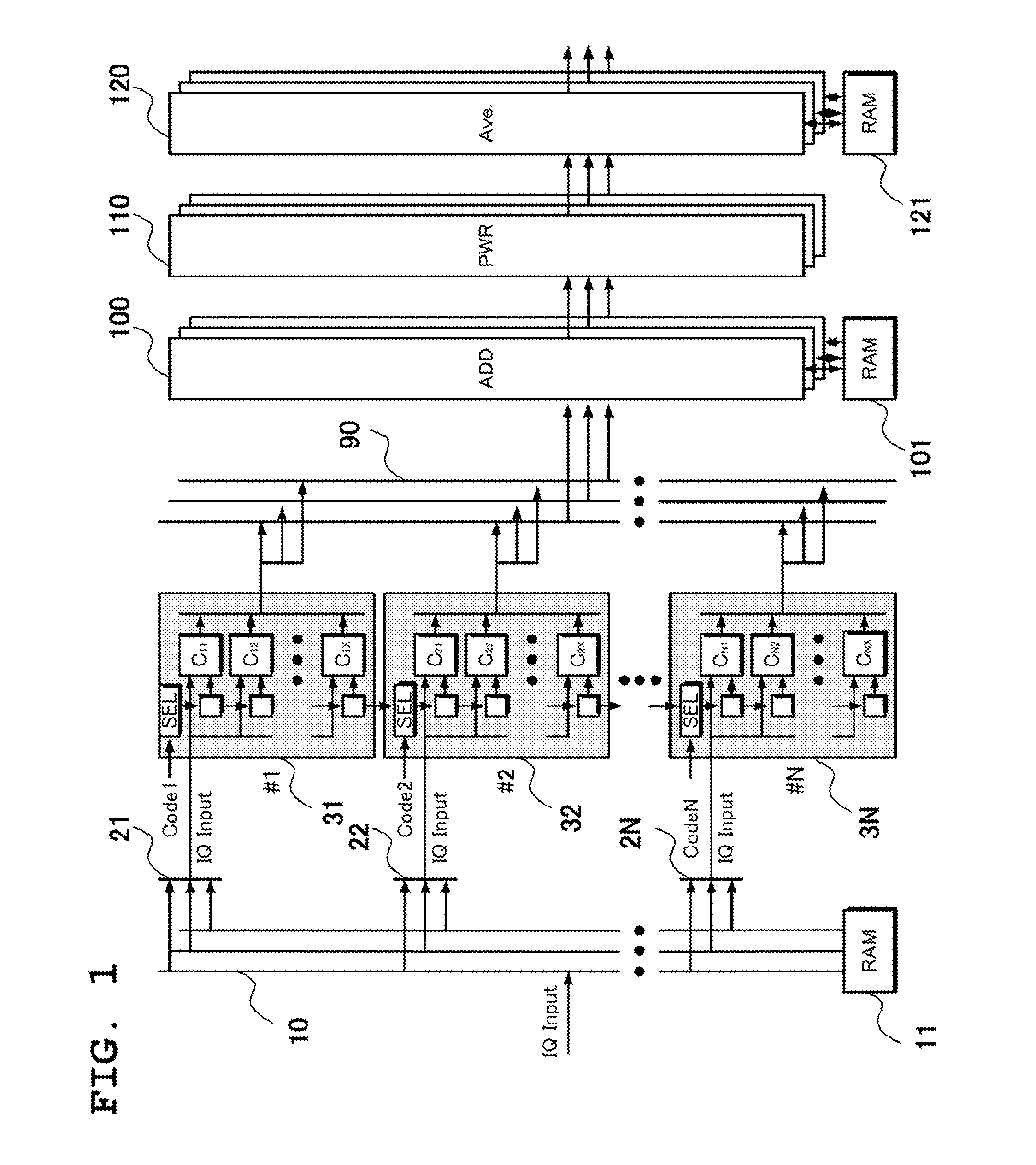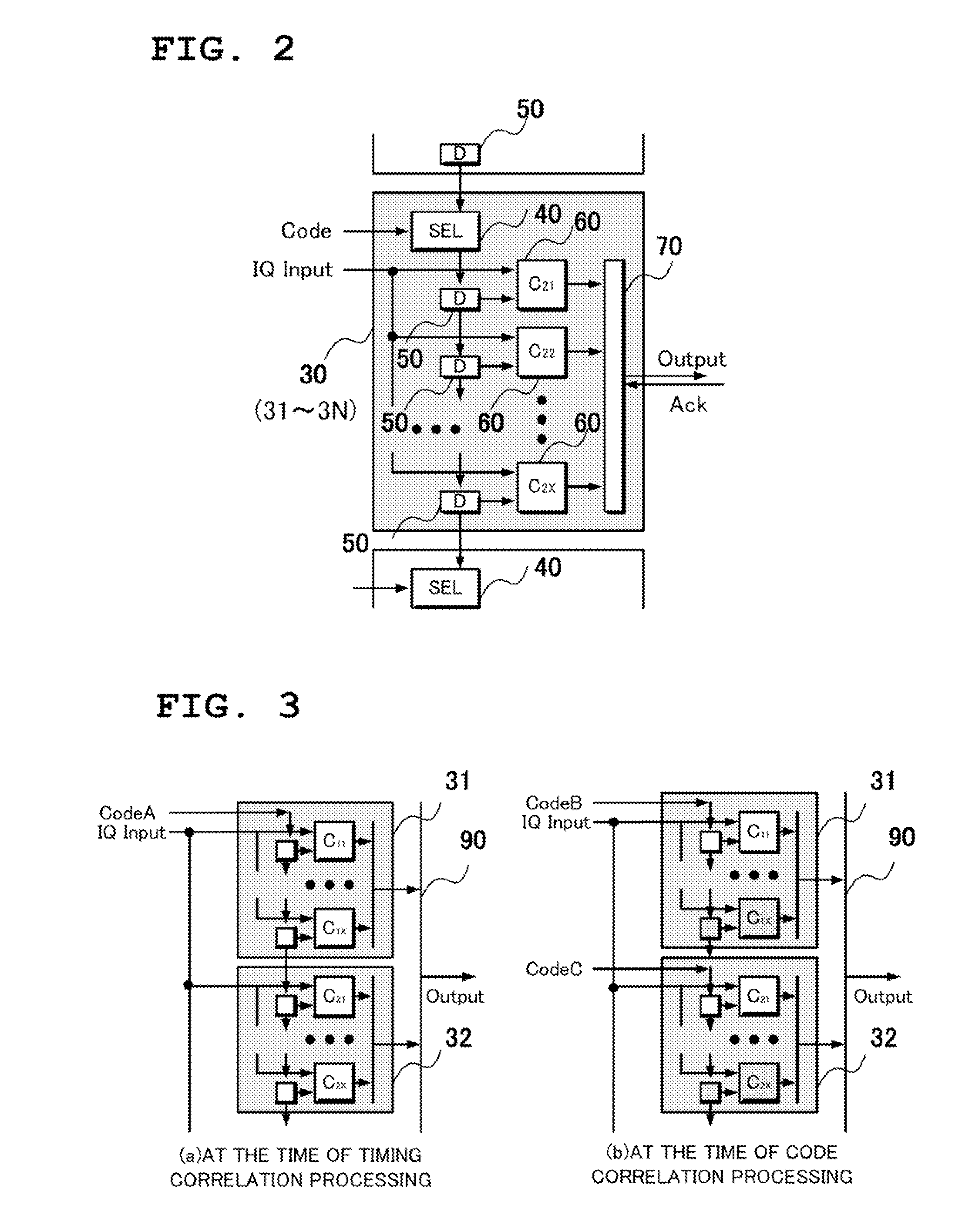Synchronization processing circuit and synchronization processing method in wireless communication system
a synchronization processing and wireless communication technology, applied in the direction of synchronization arrangement, digital transmission, electrical equipment, etc., can solve the problems of low efficiency, low expandability, and difficulty in further sharing of the circuit with other code correlation processing and the like, and achieve the effect of efficient coping
- Summary
- Abstract
- Description
- Claims
- Application Information
AI Technical Summary
Benefits of technology
Problems solved by technology
Method used
Image
Examples
first exemplary embodiment
FIG. 8 is a diagram showing an exemplary embodiment of a synchronization processing circuit in a case where the first mode of implementation is applied, as one specific example, to a wireless communication processing system capable of coping with both a W-CDMA (Wideband Code Division Multiple Access) radio system standardized by 3GPP (3rd Generation Partnership Project) and an LTE (Long Term Evolution) radio system.
(Description of Structure)
FIG. 8 shows an exemplary embodiment in a case where the entire synchronization processing circuit is parallelized to have three lines to enable up to three kinds of synchronization processings to be executed in parallel and eight correlation operation modules (codes 31 to 38) are mounted in both the systems.
The first exemplary embodiment is formed of as many input data control units 10 as three parallel processings, eight input data selection units 21 through 28 which are as many as correlation operation modules, correlation operation modules 31...
PUM
 Login to View More
Login to View More Abstract
Description
Claims
Application Information
 Login to View More
Login to View More - R&D
- Intellectual Property
- Life Sciences
- Materials
- Tech Scout
- Unparalleled Data Quality
- Higher Quality Content
- 60% Fewer Hallucinations
Browse by: Latest US Patents, China's latest patents, Technical Efficacy Thesaurus, Application Domain, Technology Topic, Popular Technical Reports.
© 2025 PatSnap. All rights reserved.Legal|Privacy policy|Modern Slavery Act Transparency Statement|Sitemap|About US| Contact US: help@patsnap.com



